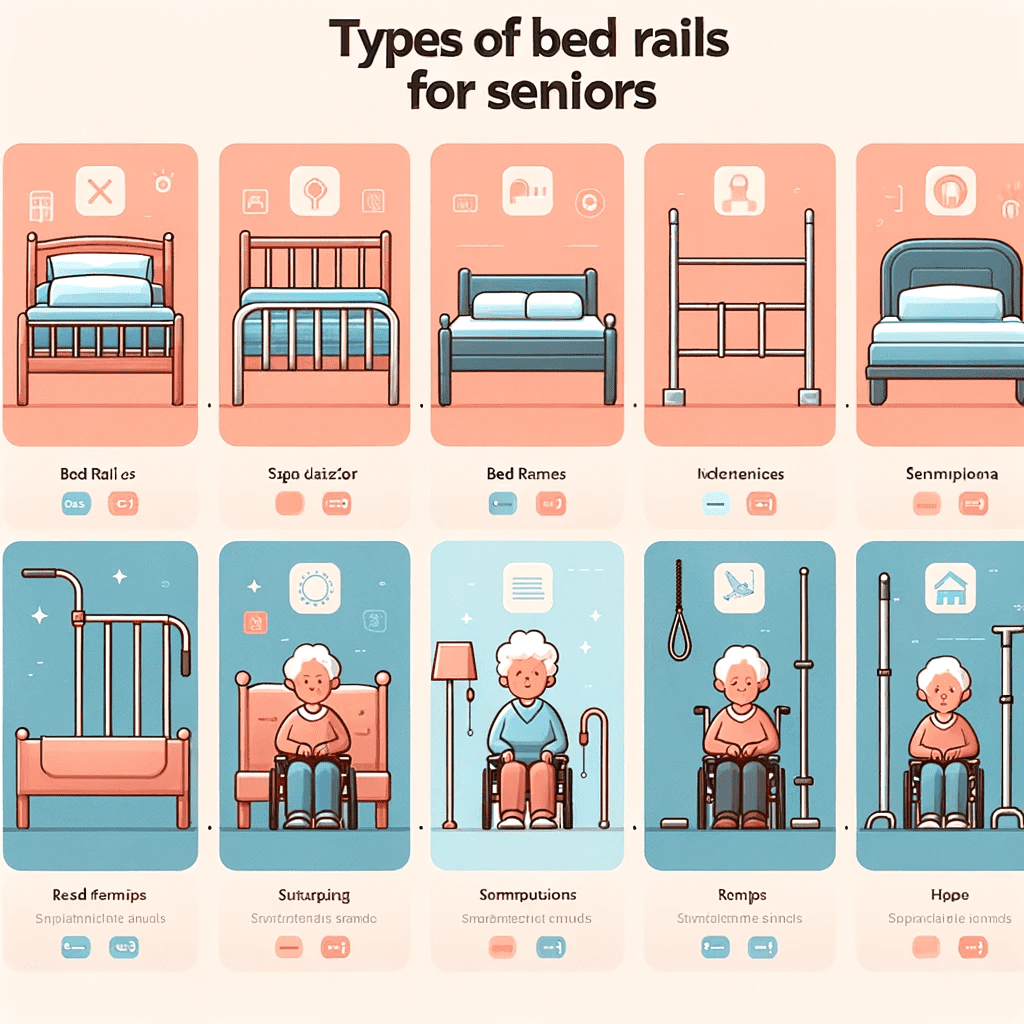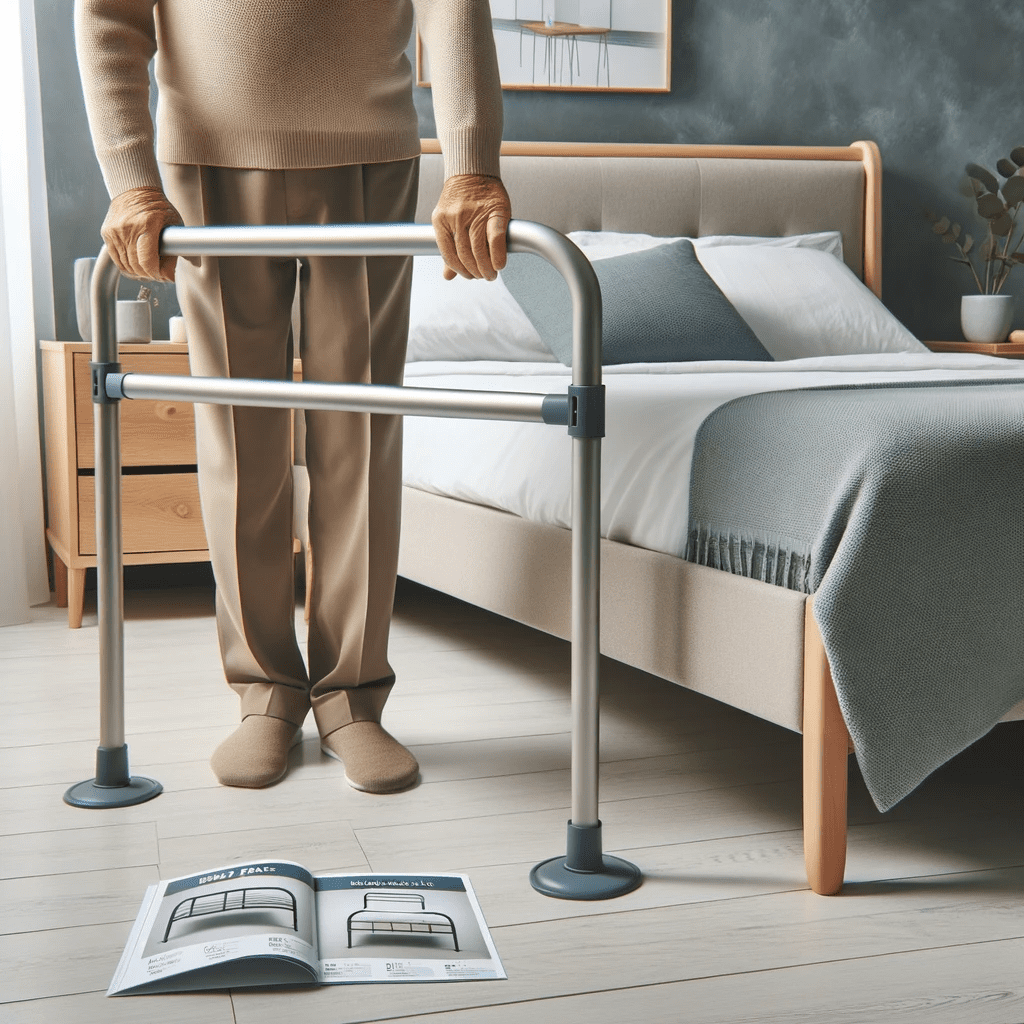Bed Rails for Seniors #1 Ultimate Guide
Introduction to Bed Rails for Seniors
As the global population ages, the need for bed rails for seniors continues to grow. These essential tools not only facilitate better mobility but also promote the safety and independence of elderly individuals.
Bed Rails for Seniors are increasingly becoming indispensable in caregiving settings, from private homes to healthcare facilities. With numerous options in the market, it’s crucial to understand the various types of bed rails available, their features, safety standards, and alternatives. This comprehensive guide aims to shed light on these aspects.
The Significance of Bed Rails in Promoting Independence
Bed Rails for Seniors serve multiple purposes that significantly enhance the quality of life for seniors. One of the most prominent uses is to assist with repositioning. They provide a sturdy grip that allows seniors to adjust their positions in bed easily. This feature is particularly beneficial for those with limited mobility or muscle weakness.
Beyond repositioning, bed rails offer valuable support while getting in and out of bed. They act as bedside assist handles, reducing the physical strain often experienced during these transitions.
Fall prevention for the elderly is another critical area where bed rails prove their worth. These tools act as senior bed guards that prevent accidental falls from the bed, particularly during the night.

Types of Bed Rails Available
Regarding Bed Rails for Seniors, you have several options to consider. Two primary categories are portable and hospital bed rails for home use.
Portable Bed Rails: Versatility Meets Functionality
Portable Bed Rails for Seniorsare a convenient option for many households as they are generally less cumbersome and can be installed on most home beds. Their versatility makes them a go-to option for those seeking both functionality and convenience. Here, we delve into the various types of portable bed rails available, offering insights into their unique features and advantages.
Adjustable Bed Rails for Seniors
Adjustable Bed rails for Seniors are a highly versatile option, allowing you to customize their length and sometimes even their height. This is particularly useful for seniors with varying mobility needs or for those who frequently change their mattress size. If you need to switch from a twin to a queen bed, for example, adjustable bed rails can adapt to the new size without requiring a new purchase. Their flexibility makes them an economical choice, serving various needs over time.
Fold-Down Bed Rails for Seniors
Fold-down bed rails are perfect for those who require a more temporary or portable solution. As the name suggests, these rails can be folded down when not in use, making them easy to store and transport. This is ideal for seniors who travel often or for use in guest rooms where you may not always need the added safety of a bed rail. Their ease of storage and set-up make fold-down bed rails convenient for many.
Legless Bed Rails for Seniors
Legless bed rails differ from their counterparts in that they don’t have legs that reach the floor. Instead, they are secured by a flat portion or flap that slips between the mattress and the box spring, adding a layer of stability without the need for legs. These types of rails are particularly useful for beds with storage drawers underneath, where traditional rails with legs might interfere.
Dual Bed Rails for Seniors
Dual bed rails offer support on both sides of the bed and are generally connected via a frame that slides under the mattress. This provides double the protection and assistance, making it an excellent option for seniors who have more significant mobility issues or a higher risk of falling out of bed. It’s also a good choice for shared beds, offering support for two individuals.
Each type of portable bed rail comes with its own advantages and possible limitations. When choosing one, it’s crucial to consider the specific needs and conditions of the senior who will be using it. For instance, adjustable bed rails are best for those who often change their sleeping arrangements, while fold-down bed rails are more suited for temporary or occasional use. By understanding the unique features of each type, you’ll be better equipped to make an informed choice that addresses your specific needs.
Hospital Bed Rails
Hospital bed rails are more specialized and are generally used in healthcare settings. They offer greater adjustability and often include advanced features like controls for bed adjustments.

Key Features to Look For
When shopping for Bed Rails for Seniors, it’s crucial to keep certain features in mind to ensure you make an informed decision.
- Easy Installation: Look for bed rail installation tips and ensure that the model you choose can be easily installed.
- Sturdy Design: It’s essential to opt for sturdy bed rails for adults, as they need to support the user’s weight adequately.
- Good Grip: Non-slip bed rails offer a better grip, significantly reducing the risk of accidents.
- Adjustability: Adjustable bed assist rails are excellent as they can be adapted to meet individual needs, especially in terms of height and length.
Risks Associated with Bed Rails
While bed rails offer numerous benefits, they also come with some risks, primarily related to entrapment. This risk is particularly high for seniors with cognitive impairments. In such cases, bed rails might not be the most suitable option for elderly sleep safety.
Federal Standards and Safety Concerns
Before making a purchase, it’s vital to familiarize yourself with the federal standards governing bed rails. Recent recalls on specific models due to safety concerns also warrant attention. Always opt for top-rated bed rails that comply with federal guidelines to ensure maximum safety.
Exploring Alternatives to Bed Rails: Other Avenues for Ensuring Safety and Mobility
While bed rails serve as an excellent safety and mobility tool for many seniors, they might not be suitable for everyone. Whether due to specific health concerns or personal preferences, alternatives to traditional bed rails exist. Below, we delve into some of these options to help you decide which might be the best fit for your situation.
Foam Bumpers: Gentle Barriers for a Good Night’s Sleep
Foam bumpers serve as softer, less rigid alternatives to traditional metal or plastic bed rails. They are essentially elongated foam wedges that fit alongside the mattress, acting as a gentle barrier that prevents seniors from rolling off the bed. These are particularly useful for seniors who find bed rails too confining or intrusive.
Foam bumpers are also a good option for those with sensitive skin or who are prone to bruising, as they provide a softer surface. They are usually covered in a hypoallergenic material that is easy to clean and maintain. However, they might not offer the same level of support for repositioning or getting in and out of bed, which is something to consider based on your needs.
Medical Alert Devices: Immediate Assistance at the Press of a Button
Medical alert devices serve as another viable alternative to bed rails. These devices are typically worn as a necklace or bracelet and feature a button that, when pressed, immediately contacts a monitoring center or pre-designated contact, providing instant assistance in case of a fall or other emergency.
While they don’t physically prevent falls, medical alert devices offer a layer of security by ensuring that help is just a button-press away. This is particularly beneficial for seniors who live alone or are often left unattended. The devices can be connected to various services, including fall detection and GPS tracking, offering a comprehensive safety net.
Adjustable Beds: A Multi-Faceted Solution for Mobility and Comfort
Adjustable beds provide the unique ability to change the mattress’s angle, helping seniors enter or exit the bed more comfortably. They often come with remote controls that allow for adjustments to the head and foot of the bed, assisting with both mobility and various health conditions like sleep apnea, acid reflux, or poor circulation.
This type of bed eliminates the need for an added tool like a bed rail, as the bed itself serves multiple purposes. For instance, raising the upper body can assist with both respiratory issues and mobility, while elevating the legs can help with circulation. It’s a more comprehensive solution but also comes with a higher price tag. Therefore, adjustable beds may be best for those looking for a long-term solution that addresses multiple needs.
Choosing the right alternative to Bed Rails for Seniors depends on various factors, including specific mobility issues, the user’s comfort preferences, and budget considerations. By exploring these alternative solutions, you can find the best fit for maintaining safety and independence without relying on traditional bed rails.
Conclusion – Bed Rails for Seniors
Bed rails serve as a multifunctional tool that significantly enhances the quality of life for seniors. However, it’s essential to consult healthcare professionals before making your final decision, especially if the individual has specific health concerns or limitations.
Additional Resources – Bed Rails for Seniors
- Government agencies:
- United States Food and Drug Administration (FDA): The FDA has a website with information about the risks and benefits of bed rails, as well as safety recommendations for consumers and caregivers. You can also find a list of approved bed rails on the FDA website.
- Consumer Product Safety Commission (CPSC): The CPSC has a website with information about bed rail safety, including a list of recalled bed rails.

